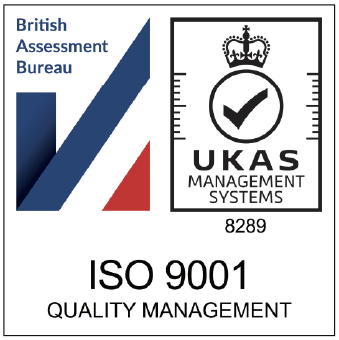It’s that time of year when the dreaded ‘R’ word rears its ugly head. Yes, that’s right, returns. For many eCommerce businesses returns are not only a pain to deal with, but can lose them money. But it doesn’t have to be this way. In fact, it can be possible to generate revenue and save money with returns. Keep on reading to find out how…
Why eCommerce returns matter
How important are eCommerce returns?
The answer is simple – they’re very important.
And, as the volume of eCommerce sales increases, so too does the volume of returns.
In fact, according to a piece of research by the Interactive Media in Retail Group a quarter of all consumers return between 5% and 15% of the items they purchase online.
What’s more, 79% of consumers take a retailer’s returns policy into account when deciding whether or not to make a purchase. Research from Barclaycard has found that 30% of customers deliberately over-purchase goods, with the intention of returning the items they don’t like, or that don’t fit.
So, returns are a fact of life. Plus, if you’re aiming to grow your eCommerce business, then you should expect to see a proportional increase in the number of returns you have to deal with.
It will pay to have a proper returns strategy in place sooner rather than later.
Returns by retail category
Now, we realise that those are some pretty bold statements that we’ve set out above. But, depending on which retail category you operate in, you’ll experience varying percentages of returned items.
To make things clearer, the table below sets out the average return rate for each of the most common retail categories:
| Retail Category | Return Rate (%) |
| Clothing | 12.2% |
| Automotive Parts | 19.4% |
| Beauty | 4.3% |
| Footwear | 9.1% |
| Home Appliances | 3.8% |
| Home Improvement | 11.5% |
| Furniture/Housewares | 11.5% |
| Sporting Goods | 7.6% |
As you can see, return rates vary significantly between retail categories. Figuring out what your likely return rate will be, based on the retail categories you cover, will help you decide how much of a priority your returns strategy should be.
How to reduce the cost of returns for your eCommerce business
Okay, so now we’ve seen the importance of eCommerce returns, let’s take a look at some ways in which you can make your returns process as affordable and efficient as possible.
Use a returns portal
Traditionally, returns would be managed via paper return slips included with every single order. With the majority of these returns slips going unused, this is a wasteful and costly practice.
By using a paperless, digital returns portal, you can eliminate the need for paper return slips, cut down on the administration associated with processing them, and create a quicker, smoother returns process for your customers. Win, win!
Use efficient inbound logistics
Just as you may spend time researching the best, most cost-effective shipping and courier services, you should put just as much effort into researching your inbound logistics provider.
In other words – you need to make sure every return is sent using the most cost-effective solution.
This is especially important if you operate in a retail category with a high rate of returns such as clothing or automotive parts.
Remember to factor in the variety of goods you sell. If you sell items of many different sizes and weights, then you’ll need to make sure you’re offering appropriate returns solutions. For example, you don’t want to automatically offer a two-man collection service, when they could be picking up a cushion or other small item.
Localise returns
If you ship your goods internationally, then you’ve probably given considerable thought to your international shipping, customs and tax requirements.
You should give equal thought to the way international returns are managed.
Different countries have different expectations and norms when it comes to returns. For example, Germany has a ‘returns culture’ where up to 70% of clothing items are returned. This means they expect a flawless returns process. In France, over 50% of consumers like to use drop off locations for their returns.
No matter where your international returns are coming from, ensure that your returns process is tailored to local expectations.
Restock returns rapidly
The faster you can get returned items back into stock, the faster you can sell them again.
Goods that are in the middle of the returns process are in a sort of ‘limbo’, which will cost you money and mean you miss out on potential sales.
To help you better track returns and add them back into inventory, consider using an online returns portal or outsourcing your returns processing to a 3PL company that’ll be able to take care of this for you.
Refund rapidly
Customers are now expecting refunds to be processed quicker than ever. In fact, according to research from logistics provider ZigZag, 78% of consumers say that fast refunds are the most important aspect of the returns experience.
Not only can processing refunds quickly save you money in terms of customer service enquiries and complaints, but it also increases the likelihood that those customers will buy something else from you with their newly refunded money.
How to make money on returns for your eCommerce business
Action those tips outlined above and you can significantly reduce the costs associated with your returns. But, is it actually possible to generate revenue on your returns?
The answer is a resounding yes.
Below, we’ve set out some of the key ways you can generate revenue from your returns.
Boost repeat purchases
Arguably the best way to boost revenue associated with returns, is to increase the likelihood of repeat purchases.
You can do this by offering a flawless, easy returns process to customers.
As we saw with some of those stats earlier, the returns process plays an important role in many consumers’ decision to purchase from you. If you live up to expectations and provide an excellent returns process, you’ll be highly likely to win their custom again.
Offer exchanges
In many cases, consumers are returning an item because they either want an alternative size (in the case of clothing), or they want a similar, but slightly different item (in the case of home furnishings).
By offering an exchange in these situations, you can effectively avert a refund and improve the customer’s experience. Why? Because the customer gets the item they want, without having to place another order.
Liquidate unsellable inventory
Unfortunately, as an eCommerce retailer, you’ll always receive returned items which cannot be resold. They’re perhaps slightly damaged or are end of line items that don’t stand much chance of selling.
Instead of simply binning these items and writing them off as a loss, you can liquidate them and sell them on to value retailers. If you’re unsure how to approach value retailers, there are specialist liquidation brokers who can help you.
Recommerce and the circular economy
Recommerce refers to the process of selling returned or previously owned items. It’s a strategy which covers the reuse, resale or recycling of unsold pieces of inventory.
With a recommerce strategy in place you can choose to recycle returned items (great for your green credentials), reuse returned items (upcycling and turning them into other useful, saleable items), or resell them (platforms such as Depop, Poshmark and RealReal are ideal recommerce channels).
Implement an effective recommerce strategy and you can not only make your eCommerce company part of the circular economy, but generate revenue too.
Outsource your returns process
Perhaps the easiest and most effective way to reduce the cost of your returns, and even generate revenue from them, is to outsource your returns to a specialist provider such as 3PL.
After all, managing returns can be a complicated business. By outsourcing your returns to a specialist provider, you’ll not only be able to leverage the decades (or more) of their returns experience, but they’ll have the contacts, knowledge and expertise to make your returns process as good as possible.
As we saw earlier, it pays to get returns right.
Speak to 3PL about your returns management today
For more eCommerce business, marketing and fulfilment advice, read the 3PL blog…
Rethinking Returns: Why Return Policies Are Vital For a Good Customer Experience | How to Plan for Peak Season Returns | A Guide to International Shipping for eCommerce Stores
Speak to 3PL about your order fulfiment
It’s time to supercharge your business and overtake your competitors. Speak to 3PL today and find out how we can take your ecommerce and B2B fulfilment to the next level.


